Cartoon is a fairly sort of a proposition. You have to be fairly intelligent — if you were really intelligent you’d be doing something else; you have to draw fairly well— if you drew really well you’d be a painter; you have to write fairly well— if you wrote really well you’d be writing books. It’s great for a fairly person like me,” Peanuts creator Charles Schulz told Barnaby Conrad of The New York Times in 1967.
The beloved comic strip turned 70 earlier this month without losing the tag ‘beloved’ because of Sparky’s (Charles Schulz) treatment of the characters. Through Charlie Brown and the gang he asked existential questions day after day, year after year, right through to the last of the comic strips that appeared a day after his death in 2000.
Sitting down with a collection of Peanuts strip is as much a pleasure for a 40-year-old as it is for an eight-year-old because Charlie Brown worries all that we worry about. He encapsulates the insecurity that everyone feels. Kids, at times, feel that they don’t fit in, like Charlie Brown. Adults are full of self-doubt, just like Charlie Brown.
In the uncertain times that we live in, among the few certainties are that — in the published reruns of the strip — Charlie Brown will feed Snoopy without fail, Snoopy will try to write another story sitting at a typewriter on his doghouse and Schroeder will remain the unrequited love of Lucy. Yes, we still turn to the funny pages in the newspaper or look forward to the next Peanuts film.
In fact, Apple TV+ is celebrating the moment with a new original series resulting from an exclusive partnership between Peanuts and WildBrain. The Snoopy Show will make its global debut on February 5, 2021 and follows the very successful Peanuts in Space: Secrets of Apollo 10 and Snoopy in Space.
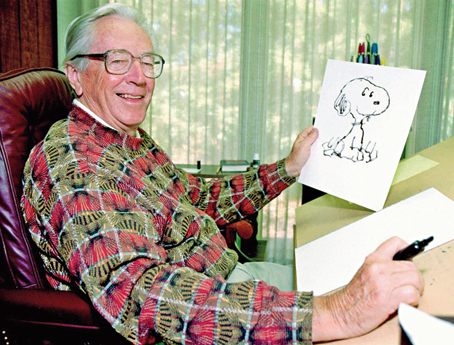
Charlies Schulz Sourced by The Telegraph
The early years
In 1950, Peanuts was nothing like what the world had seen. It wasn’t anything like Blondie. Created by Chic Young during the dark days of the Depression, the character of Blondie was introduced as frivolous, a heroine with many beaus, including Dagwood, heir to the lucrative Bumstead Locomotive Works. Dagwood appeared inept as a suitor while his father, J. Bolling Bumstead, was not only opposed to the match, he disinherited Dagwood for marrying the “beautiful flapper”.
Blondie revelled in domestic bliss while Peanuts, which came decades after, made the world realise how difficult it is to be a child — “You’re forced to go to school, you’re forced to live where your parents live. There’s a struggle for survival among children that adults forget about,” Schulz said in an interview with The Guardian in 1980.
Schulz was born in Minneapolis — the son of Carl Schulz, a barber, like Charlie Brown’s father — and was soon after nicknamed Sparky (Barney Google’s horse Sparkplug). He always wanted to be a cartoonist. People saw in him a lot of Charlie Brown, something he never shied away from. “But actually the strip is just about all the dumb things I did when I was little.” Like Charlie Brown, he was left scratching his head on the baseball field. In the Army, he didn’t have the most memorable of innings. After the War, he got a job lettering a comic magazine and then taught at a Minneapolis art school. He met a fellow instructor named Charlie Brown, and little did this person know that he would never be forgotten!
Next came a weekly cartoon for The St. Paul Pioneer Press called Li’l Folks, which was dropped after a year only to be picked up by United Features in Manhattan, renaming it Peanuts without paying any heed to the creator’s protests. “What an ugly word it is.... Now Peppermint Patty is a good title for a strip,” he said about the title.
Teaches us to take our passions seriously
Peanuts has endured. Over the years it reached cult status. The idea was not to shatter the idyllic perceptions of childhood. “Sparky said many times that he observed that there was a whole world going on in the playground that adults had no clue about. I think Sparky intensely held on to the feelings he had, whereas many of us discuss them with our parents or others and then let them go,” Schulz’s widow Jean has told The Guardian.
And she’s right. There is warmth in every strip. “The public at large regards Peanuts as a cherished part of our shared popular culture, [while] cartoonists also see it as an irreplaceable source of purpose and pride, our gold standard,” Garry Trudeau, creator of Doonesbury, has said.
Perhaps lending the enduring element to the comic strip is the fact that it’s the opposite of any fairy tale. No dragons are slain. There are no witches. No prince wins over a princess. In fact, nobody wins in Peanuts. The catchphrases sprinkled across the years are “Good grief!”, “Augh!” and “Rats!”. Lucy is crabby. Linus doesn’t get to see the Great Pumpkin rise on Halloween. Charlie Brown’s love for red-haired Francesca remains unfulfilled.
That doesn’t mean Peanuts is bleak. There is a sense of perseverance and very importantly, it teaches us to take our passions seriously — be it writing (Snoopy fails time and again), on the field (Charlie Brown almost always loses) or music (Schroeder can make Beethoven come alive on a toy piano).
Actually, Snoopy’s not a real dog! “He’s an image of what people would like a dog to be. But he has origins in Spike, my dog that I had when I was a kid. White with black spots. He was the wildest and smartest dog I’ve ever encountered. Smart? Why, he had a vocabulary of at least 50 words. I mean it. I’d tell him to go down to the basement and bring up a potato and he’d do it. I used to chip tennis balls at him and he’d catch and retrieve ’em,” Schulz once said.
The late Italian cultural critic Umberto Eco, who wrote the introduction to the first Italian Peanuts book, referred to Schulz’s work as “poesie interrompue” or ‘interrupted poetry’. Pop culture scholar Arthur Asa Berger had said that Schulz was “a mirthful moralist”.
Frankly, all that matters is Peanuts remains a source of happiness. In the world of Peanuts there is no room for adults — though in TV specials there were only occasional sounds to identify teachers and parents. Peanuts remains, even after 70 years, a security blanket — like the one Linus carries — for the child hiding in us or the children who still gloss over the funny pages.
Quotable quotes
- I’ve developed a new philosophy. I only dread one day at a time — Charlie Brown
- My life is like a messy colouring book. — Rerun van Pelt
- My anxieties have anxieties — Charlie Brown
- I love mankind — it’s people I can’t stand. — Linus van Pelt
- How can you do push-ups when your nose gets in the way? — Snoopy
- We critical people are always being criticised! — Lucy van Pelt
- The joy is in the playing. — Schroeder
- There’s no sense in doing a lot of barking if you don’t really have anything to say. — Snoopy
- Happiness is having your own library card. — Sally
- Ma’am? What kind of test are we having today? Multiple choice? Good! I choose not to take it. — Peppermint Patty
This & That: Trivia
- There are 17,897 Peanuts comic strips. They ran between 1950 and 2000, each one drawn by Charles Schulz.
- Linus didn’t speak for the first two years of Peanuts strips. He got a line only in 1954.
- The first piece Schroeder — who loves Beethoven — played was Sergei Rachmaninoff’s Prelude in G Minor.
- From 1983 to 1985, singer Fergie was the voice of Sally Brown for television specials and The Charlie Brown and Snoopy Show.
- TV executives thought A Charlie Brown Christmas would flop. It went on to become one of the longest-running holiday specials of all-time.
- Charles Schulz was a World War II veteran. During the war, he was drafted into the Army and he trained as a machine gunner. He was sent to Germany toward the end of the conflict.

Coming up
Apple has shared a new trailer for an upcoming Peanuts Apple TV+ series called The Snoopy Show, which will debut in early 2021. In the series, Apple promises all new adventures following “the world’s most extraordinary beagle”. The show will launch on February 5, 2021 on Apple’s premium TV streaming service.
Charles Schulz timeline
November 26, 1922: Charles Monroe Schulz was born at home at 919 Chicago Avenue South, #2 Minneapolis, Minnesota, to Dena Bertina (nee Halverson) Schulz and Carl Fredrich Augustus Schulz.
1922-25: Charles Schulz was given the nickname “Sparky” after the racehorse character Spark Plug featured in the popular newspaper comic strip, Barney Google by Billy DeBeck.
June 1947-January 1950: Schulz’s career as a cartoonist reached a milestone with the weekly publication of his panel comic, now called Li’l Folks.
Summer 1950: Due to a conflict with an earlier comic strip that had a similar name, (Tack Knight’s Little Folks), before the strip was published the syndicate opted to rename the strip Peanuts, a title Schulz made clear even decades later that he never liked.
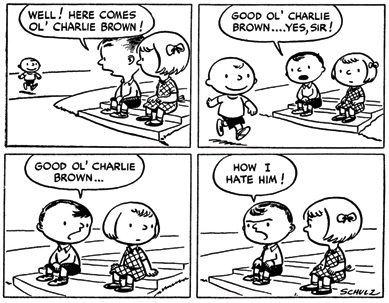
October 2, 1950: The first Peanuts comic strip debuted in a four-panel format in seven newspapers nationwide — The Washington Post, The Chicago Tribune, The Minneapolis Star-Tribune, The Allentown Call-Chronicle, The Bethlehem Globe-Times, The Denver Post and The Seattle Times. Schulz was paid $90 for his first month of strips, which consisted of a six day per week, Monday through Saturday, format until 1952.
January 6, 1952: Prior to 1952, Peanuts comic strips were featured in newspapers in the daily black-and-white strip format, published Monday through Saturday only. On January 6, 1952, the first Sunday of the year, full colour Peanuts Sunday comic strips were introduced. After that, Peanuts ran in most newspapers seven days a week with black-and-white dailies and full colour Sundays.
April 1965: The Peanuts characters appeared on the front page of Time on April 9, 1965.
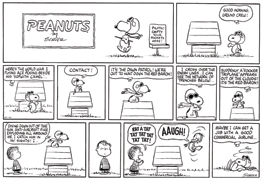
October 1965: One of Snoopy’s most iconic and popular personas — the World War I Flying Ace — makes his debut. Wearing his flying cap, goggles, and a scarf, the Flying Ace rides in his Sopwith Camel (aka Snoopy’s doghouse) and takes to the skies to dogfight against the infamous Red Baron.
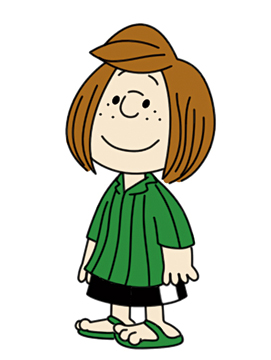
August 22, 1966: Patricia Reichardt, better known Peppermint Patty was introduced in the Peanuts comic strip. Her distinct personality, athleticism, and trademark sandals, made for a strong new character in the strip.
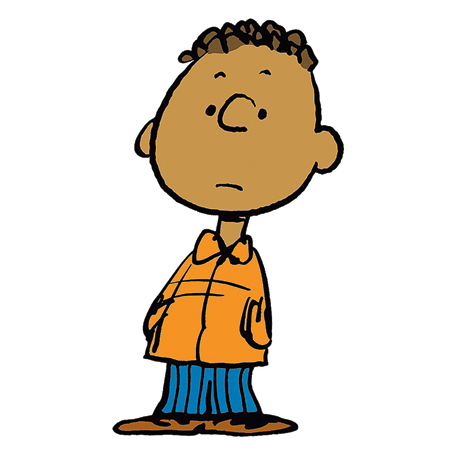
July 31, 1968: In 1968, the world lost two of its most influential men: Martin Luther King Jr, assassinated in Memphis, and Robert F. Kennedy, assassinated in Los Angeles. Civil rights and race relations were major topics throughout the nation. During this period Schulz exchanged correspondence with Harriet Glickman, a teacher and advocate, regarding the addition of a black character in the Peanuts comic strip. Realising the weight and responsibility such a character would have, Schulz introduced Franklin on July 31, 1968.
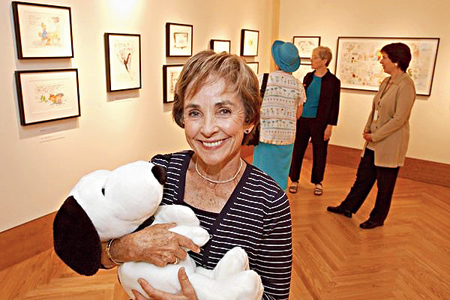
1977: Jean Schulz used several terms of endearment for her husband. One of these, “sweet babboo”, became Sally’s preferred moniker for Linus in the Peanuts comic strip.
December 14, 1999: Schulz releases an open letter announcing his retirement.
February 12, 2000: Charles Schulz dies peacefully in his sleep at home, succumbing to complications from colon cancer. The final Peanuts Sunday strip appeared in newspapers the very next day, Sunday, February 13.
Source: Charles M Schulz Museum










